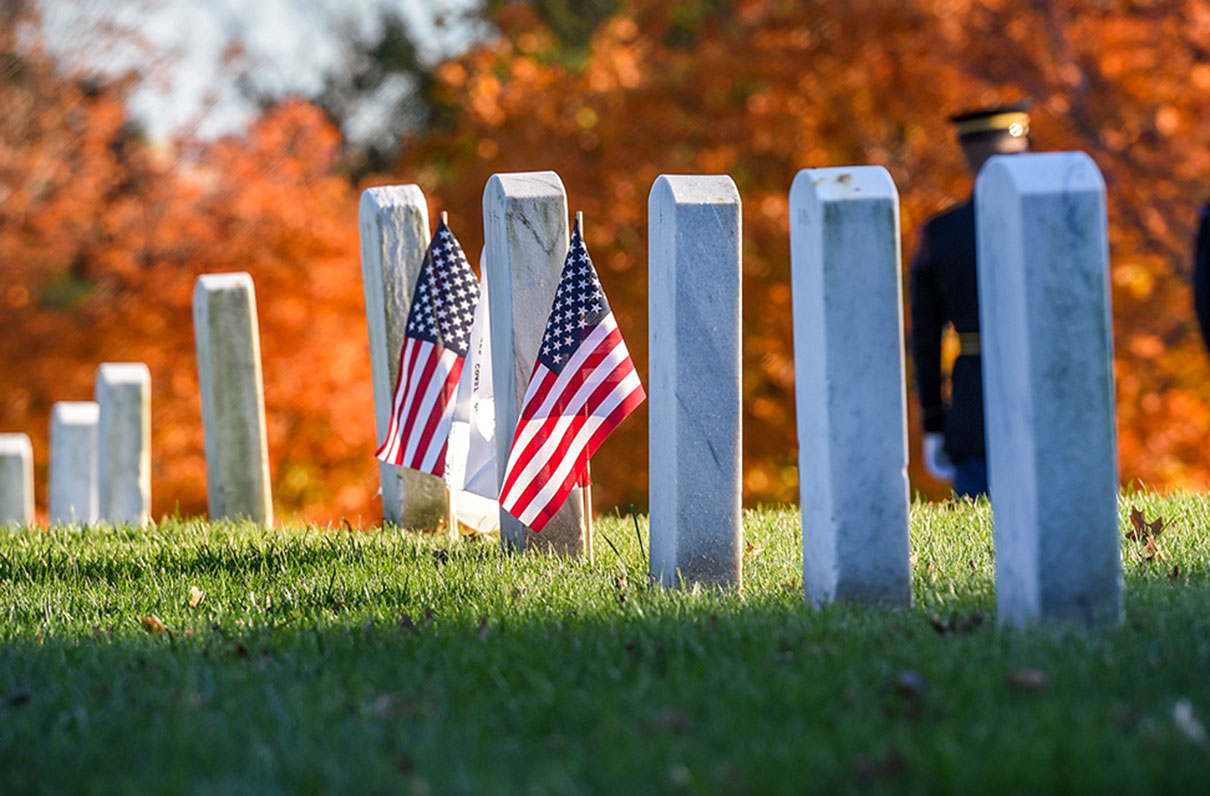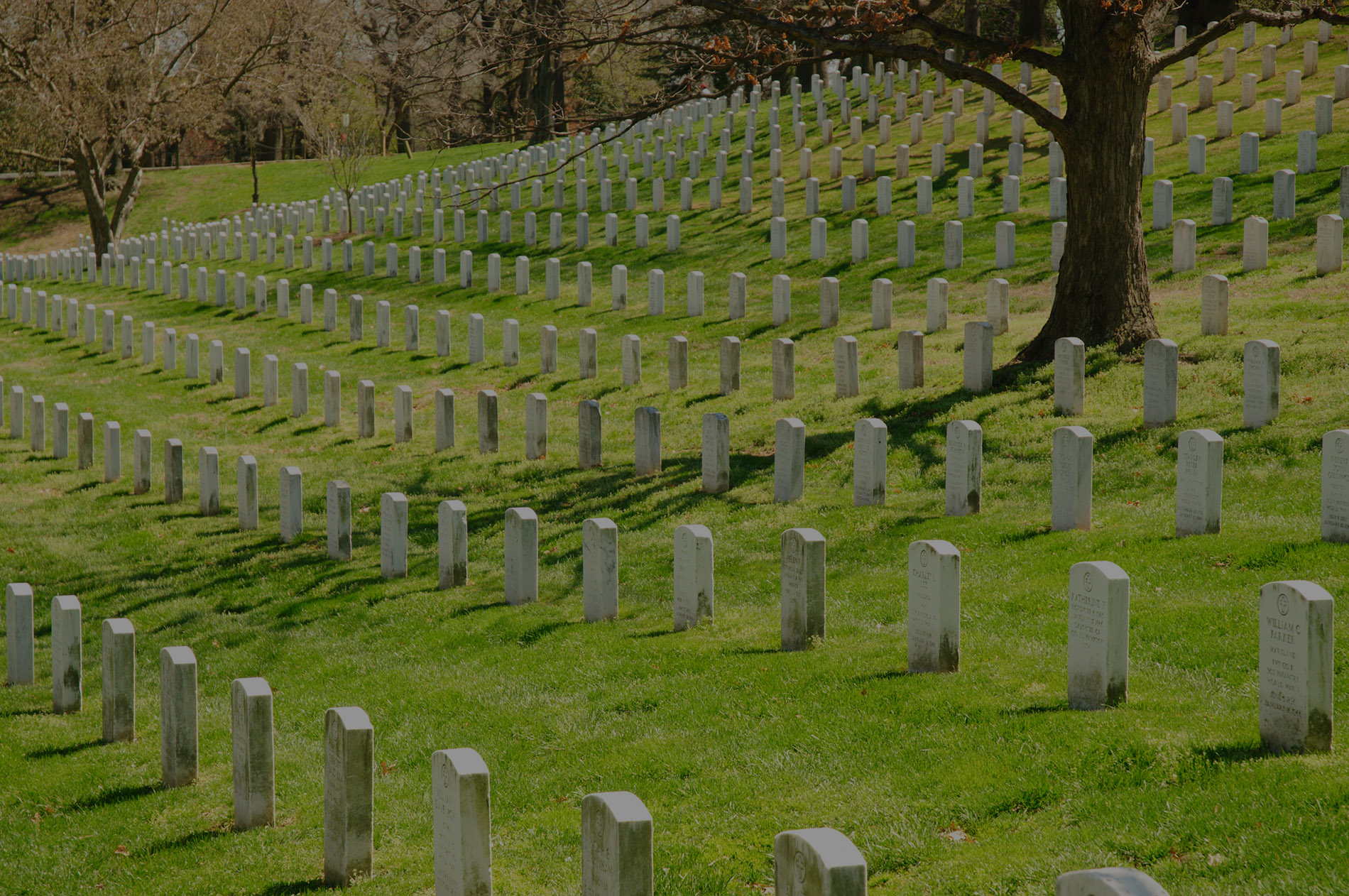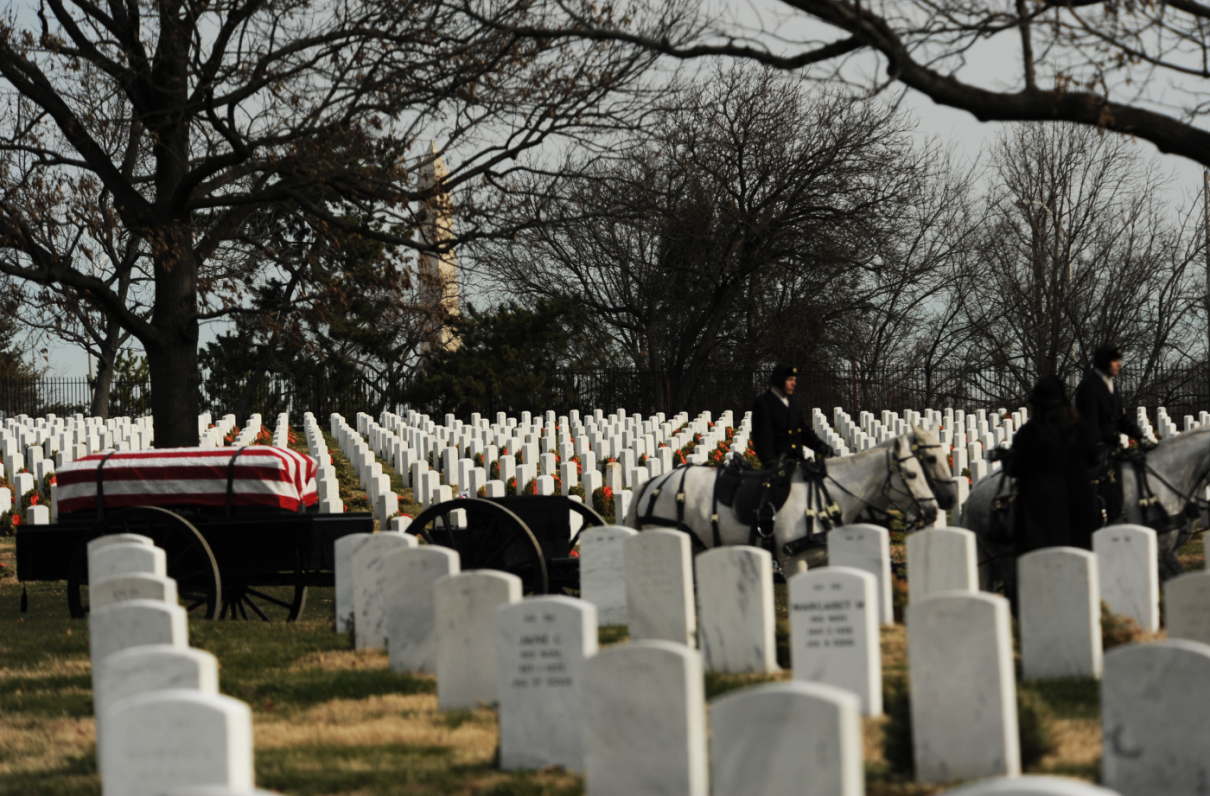On Sept. 25, then-Acting Army Secretary Ryan McCarthy announced the proposed eligibility changes for burial at Arlington National Cemetery. These draft revisions begin the first step of the federal rule-making process, a minimum nine-month procedure.
The Administrative Procedures Act requires the Department of the Army, to publish the notice of proposed rulemaking in the Federal Register and allow any interested parties to comment. The agency is also required to respond to “significant” comments and consider changes based on those comments.
Since the release of the proposed revisions, many MOAA members have written and called the Member Service Center with questions. To better understand the rulemaking process and how these proposals affect them,
MOAA has prepared several Frequently Asked Questions:
Q. How do these proposals differ from current eligibility?
A. Current eligibility standards can be found in this Arlington fact sheet. Primary differences between the draft proposals and the existing eligibility standards are:
- Emphasis on combat service for award recipients and government officials
- Minimum service of two years on active duty with combat service for traditional veterans
- Distinctions between below ground interment and above ground inurnment for eligibility
Q. Which groups won’t see significant changes?
A. These individuals who are now eligible for both inurnment and in-ground burial would remain so under the proposal:
- Any veteran who received the Medal of Honor, Distinguished Service Cross (Air Force or Navy), Distinguished Service Medal, Silver Star, or Purple Heart with combat service.
- Any former prisoner of war who, while a prisoner of war, served honorably in the active military, naval, or air service; whose last period of service terminated honorably; and who died on or after Nov. 30, 1993.
- Any president or vice president.
- Spouses, minor and adult dependents of qualifying veterans
Q. Which groups would be most affected by the proposed changes?
A. These individuals would see significant changes under the proposed eligibility rules:
- Those who die on Title 10 federal active duty (other than for training) had been eligible for inurnment and in-ground burial. They would remain eligible for both under the draft, but only if their death is combat-related.
- Those veterans who retired from active duty and are receiving retirement pay would no longer be eligible for ground burial but would remain eligible for inurnment.
- Veterans who served less than two years on active duty in combat no longer would be eligible for inurnment. At present, veterans who served at least a day on active duty (other than for training) are eligible; this group is not eligible for in-ground burial.
- Any member of a reserve component, and any member of the Army National Guard, whose death occurs under honorable conditions while on active duty for training or performing full time service would retain eligibility for inurnment only if death occurs in active duty combat or if they served at least two years in active duty combat. They would remain ineligible for in-ground burial unless they meet other qualifying criteria.
Q. Are there any exceptions to the proposed changes?
A. Yes. World War II era veterans would be eligible for inurnment, and veterans with combat service who also served out of uniform as a government official with significant contributions to national security would be eligible for both inurnment and in-ground burial.
Q. My spouse is already buried at Arlington. Will I be able to be buried with him/her?
A. Yes. The current policy at ANC states that spouses who are considered derivatively eligible and/or have pre-deceased the servicemember are still eligible for burial if space is available in the same gravesite. There will be no change to this policy.
Q. I am a retiree of xx years and had planned to be interred at ANC. Will I still be eligible?
A. It is still too early in the rulemaking process to know the specifics of what DoD plans; however, the current proposal allows for above-ground inurnment for any member of the armed forces [eligible to receive retired pay] who is not otherwise eligible. Above ground inurnments qualify for the same level of funeral honors as ground burials.
Q. I am not eligible for burial under the proposal. What does this mean for my plans and what are my options?
A. This is only the first step of a lengthy process, which includes a period of public comment. At that time, members of the public will be encouraged to share their thoughts in the Federal Registry on the proposed rule change. MOAA Members are encouraged to participate during the public comment period.
There are 138 Veteran Cemeteries active to-date, which include accommodations for honored burial for veterans which are continuing to expand.(For more, read MOAA's publication Your Guide to Military Burials.)
Q. When will these revisions take effect?
A. The proposal is still in the draft form and still must undergo the nine-month rulemaking process before taking effect. These ten steps (see this graphic) include review and approval by the secretary of defense and the Office of Management and Budget (OMB) before being published in the Federal Registry for Public comment. After this 60-day period, the Army will review and respond to the comments before drafting the final rule for DoD and OMB approval.
Q. When will the public comment period be?
A. This largely depends on the timeliness of the DoD and OMB. At this time, the public comment period is estimated to take place in April 2020.
Q. The Secretary’s proposal emphasizes “combat-service.” What does this mean for veterans who served during eras of non-combat engagement?
A. The Secretary has stated the new rules, once implemented, must be applicable across all eras of service and equitable across all the branches.
Q. What does the proposal for “government official” mean? Does this allow for civilians to be buried at Arlington?
A. The current eligibility rules include over 100 Title V positions. In order to extend the life of the cemetery “well into the future,” the SecArmy is endeavoring to scale this list of government officials to articulate the imperative of “Sacrifice, Service, and Impact.” Under the proposed criteria, non-veterans would not be eligible for burial at Arlington, unless they were a spouse or dependent family member of qualifying veteran.
Q. Will other medals for valor awards or religious burial considerations be weighed with eligibility criteria?
A. Again, it is too early in rulemaking process to discuss specific scenarios. The current eligibility standards for valor awards state: “Received Medal of Honor, Distinguished Service Cross (Air Force or Navy), Distinguished Service Medal, Silver Star, or Purple Heart.”
The Army’s proposal does not account for burial requirements based on religion. Due to the ongoing challenge of wait times at ANC, coupled with the scheduling process for funerals, individuals who are unable to go through with cremation or must schedule immediate burial have the option of using the 138 Veteran cemeteries run by the National Cemetery Administration (NCA), as well as state cemeteries, or private cemeteries which allow for VA burial benefits.
Q. What is MOAA doing?
A. MOAA leadership is currently evaluating the impact these proposals may have on the living veteran and retiree population, and will keep our members informed on next steps and how members may engage on this very important issue. We will be taking advantage of the public comment period next spring and will continue to stay engaged with senior leaders in the Department of Defense and Congress.
Since 2016, MOAA has stayed actively engaged through multiple avenues, including submitted testimony before the Armed Services Committee, participation in roundtable discussions with other VSO’s and the Advisory Committee on ANC, and disseminating multiple surveys on revised burial criteria. We are looking forward to continued representation of MOAA members throughout this process.
For more information, please visit https://www.arlingtoncemetery.mil/About/Proposed-Revised-Eligibility-Criteria.



